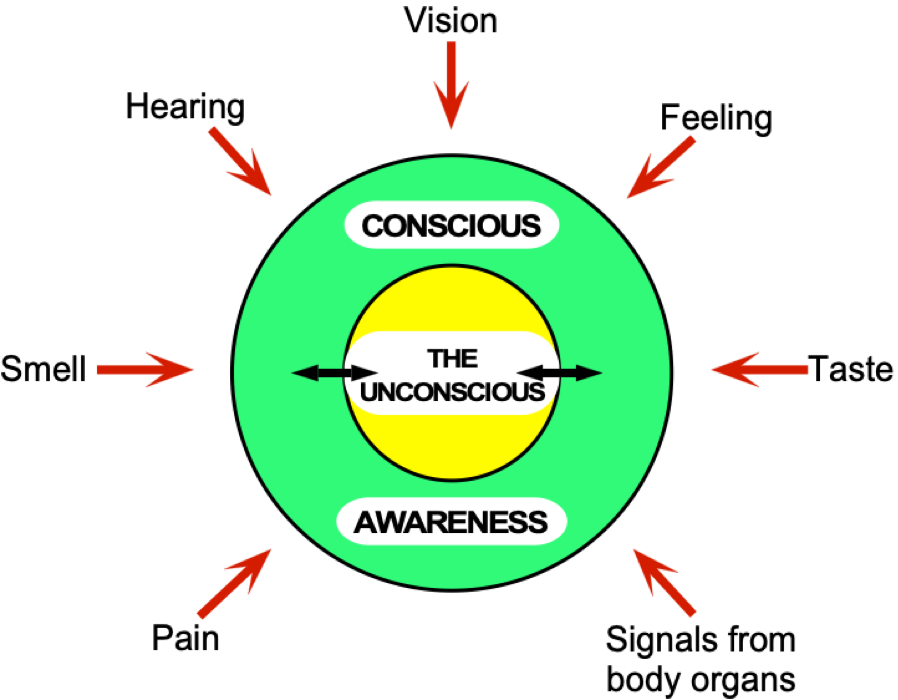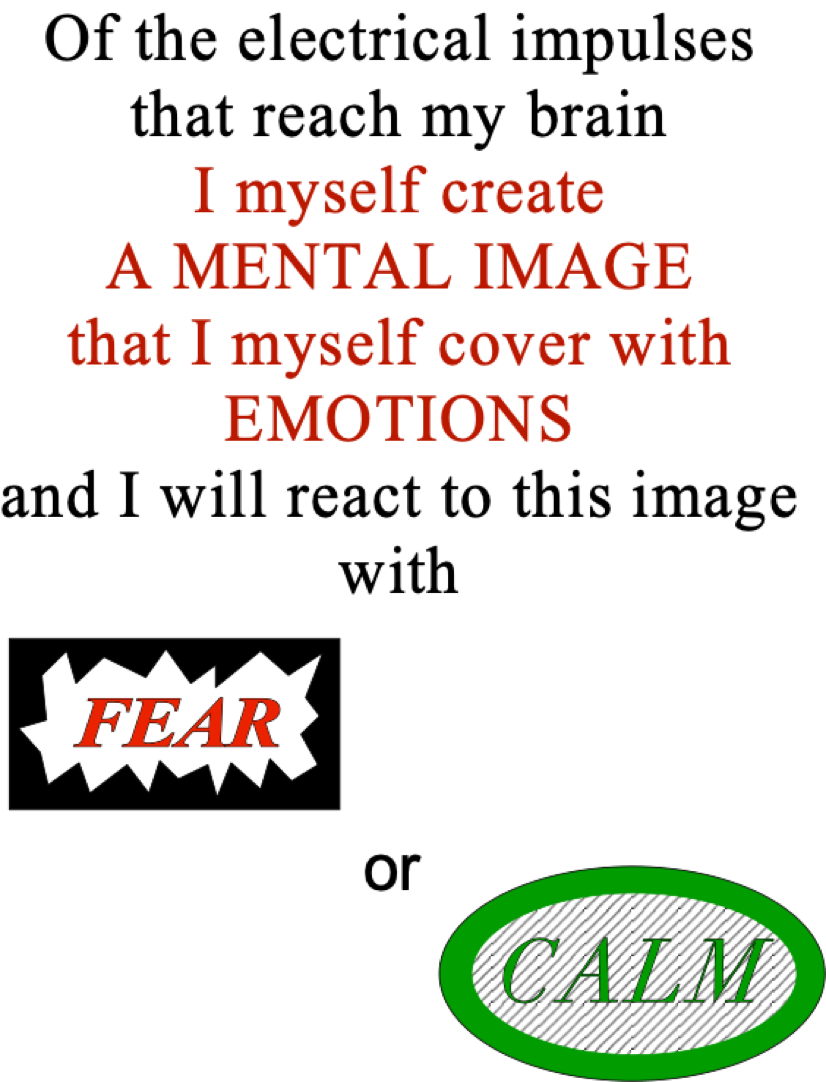Mental images
The ability to change oneself voluntarily towards a more harmonious funktion of body and mind has to do with the fact that the human brain and nervous tissues have the ability to learn, but also with this remarkable ability of the human mind which allows us to be aware of ourselves. We can look at ourselves and perceive ourselves as unique individuals. It is uncertain to what extent other animals have that function. We can make ourselves aware of a situation and plan how to change it. We can then make up our minds about what is good, or what is bad, and in what way we can change a situation. But without being consciously aware of our mental images we would not be able to accomplish any planned actions. We would basically only be guided by genetic and learned reflexes, like most other animals.
What we think and feel in the moment, what we remember or fear, will the mind present to us as a whole, but with many visible details. We can call these presentations mental images. These images can be based on logic and reason, but they are also emotionally charged and affected by centers in the midbrain and the brainstem who, among other things, control the body through hormones and nerves. This will, in turn, affect the heart, the intestinal system, the muscles, respiration, blood circulation and much more. Our inner images therefore play a crucial role in both mental function and body function.
Science believes that the lower levels of the brain are not able to distinguish between signals from an event in the present, an emotional memory or fear of the future. So, both mind and body will react to mental images.
How are mental images created?
The brain receives signals from the world around us through the auditory organs, through the eyes, through smell, taste and touch. Other body tissues also send signals to the brain. The brain receives all these chemical electrical impulses and processes them. A large part of this information stays in the subconscious mind while other parts are transformed into conscious experience.
An experience that makes us react
can thus be composed of nerve signals which reach us from the outside world as well as of emotional states and memories of past situations. The limbic system of the midbrain determines whether there is a threat to the biologic individual and, if so, starts physiologic and mental life preserving reactions. Since there is an input not only from the body and the outer world but always also from our emotional memories from experiences in the past and our fear or hope for the future it’s not untrue to say that that we react, and act, according to a complex mental image. But this image is our personal understanding of reality mixed with different emotional reactions of our mind. We do not react to anything directly but only to our own interpretation, our personal mental image.
Conscious experience of oneself is an elusive phenomenon that evades objective evidence. How the brain works physiologically can be shown. But how biochemical processes turn into a complicated conscious experience can not be described. We can only guess. There is no scientific evidence, either for or against, that living beings can gain knowledge of their surroundings through channels other than the nervous system. Parapsychological research has approached such functions as telekinesis (moving objects with the power of thought), telepathy (communicating over distance with the power of thought) and more. With current scientific techniques, however, it has so far not been possible to prove that such phenomena exist. But if we, with reference to today’s science, deny the possible existence of other communication channels than those we know of we risk to make fools of ourselves. The future is open and not yet known. Who knew anything about radio waves in the 13th century?
The knowledge that mental images can affect, and often change, automatically controlled body functions and mental functions is very old and has, since thousands of years, led to the development of self-change techniques. In the beginning they were methods used by witch doctors and shamans, often kept secret. Eventually they were also incorporated into the major religions and philosophies of life, but in other forms. Many of them aim at mental programming with positive images that are linked to good inner feelings. The idea is that if you work regularly with these techniques then the contents of your mind will change gradually and you can experience life with less fear and stress.
The human psyche encompasses both earthly and existential dimensions. But as basic functions of the human body have a great resemblance to the bodily functions of other mammals, parts of our brain and mind have this resemblance too. These functions are largely based on genetically inherited reflexes in the form of hunger, thirst, reproduction drive and more. Here the emotions of fear and anger are of great importance. In humans one can call this dimension of primitive self-experience ”ego”. Thus, all conscious self-development is about not letting this primitive self rule completely and instead let thoughts, feelings and body reactions increasingly be permeated by the influence of the spiritual and existential dimensions of the human mind. If we live mostly in the mental dimension of the ego we will experience a great deal of anxiety and fear. And the latter is also a precursor to anger. We experience the threat of not getting what we need and the threat of losing what we have. And this means that we will be more focused on ourselves and on our own survival than on others and their life situation. Of course this often results in less friendly feelings from them and increased frustrations and threats to ourselves, which in ego-controlled situations activates the stress system with increased strain on mind and body.
The philosophies that underlie most methods of personal development are all about using different techniques to strengthen the spiritual and existential dimensions of the human mind in order to reduce the ego’s influence. In the mind this results in reduced fear and anger and gives instead increased calm, more harmony and a richer life experience. For the body it means less physiologic stress and better health. Our ways of behaving and acting will become more comfortable to others which will give more pleasant repercussions for ourselves. Everybody wins on this.

